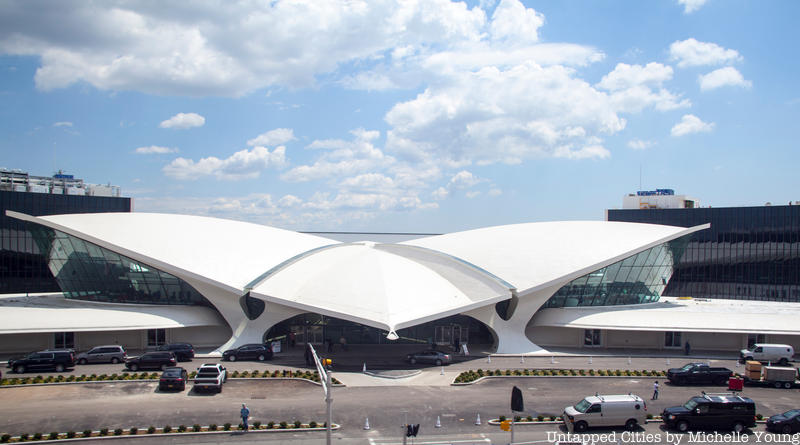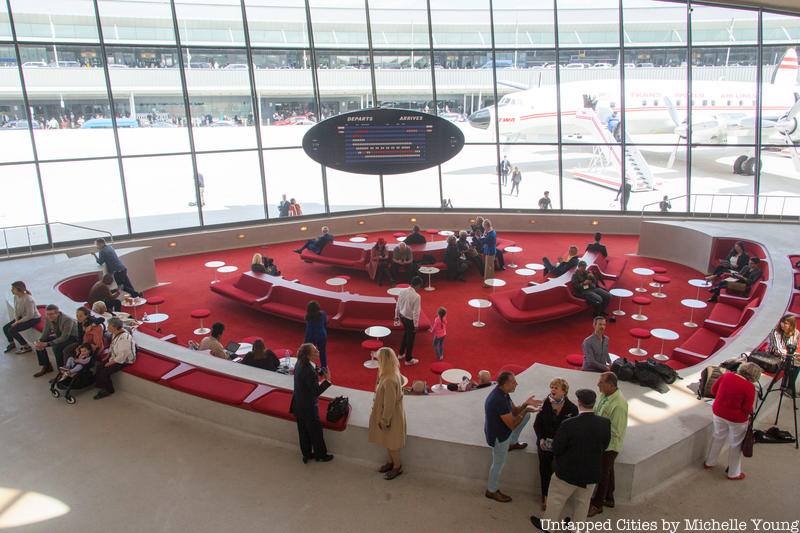 The TWA Hotel, originally the TWA Flight Center at JFK Airport
The TWA Hotel, originally the TWA Flight Center at JFK Airport
Today is the birthday of Finnish-American architect Eero Saarinen born on August 20, 1910. His works have become synonymous with the mid-century modern aesthetic and even if you don’t know him by name, you’ll recognize his tulip chairs and tables, and other industrial designs that have become ubiquitous today.
His large-scale structures are also memorable. In New York, the TWA Flight Center (now TWA Hotel) is a beloved landmark. Outside of New York, the Gateway Arch in St. Louis and the Washington Dulles Airport may be his most recognizable. Saarinen played a significant role in the development of New York’s modern architecture, designing six structures, as well as furniture that is now displayed at a number of New York City museums. Although dying relatively young at age 51, Saarinen’s New York structures shaped the future of architecture and now define cities like New York City, Buffalo, and Poughkeepsie. In celebration of the 110 years after Saarinen’s birth, Untapped New York looks at his contributions to New York state’s architecture scene.
1. TWA Flight Center

The TWA Flight Center, also known as the Trans World Flight Center, was an airport terminal at John F. Kennedy International Airport completed in 1962. The Flight Center was designed for Trans World Airlines by Saarinen, and it was subsequently transformed into the TWA Hotel, which opened in 2019. The original head house is partially encircled by a new building, which now makes up JetBlue’s JFK operations at Terminal 5.
The TWA Flight Center featured a wing-shaped thin shell roof supported by “Y”-shaped piers. The building included a three-level space with tall windows as well as tube-shaped red-carpeted departure-arrival corridors. The structure’s facade is made of large green-tinted glass walls. The building was built in Futurist, Googie, and Fantastic architectural styles, and it was one of the first flight centers to utilize enclosed passenger jetways.
Saarinen’s structure was designated a New York City landmark in 1994, but by 2002, the Port Authority of New York and New Jersey sought to redevelop the terminal after the TWA Flight Center closed. The structures on either side of the head house were demolished, yet the head house was converted into the TWA Hotel beginning in 2016, with many original details replaced with replicas. The hotel contains 512 rooms, an aviation history museum, and a cocktail lounge installed inside a preserved Lockheed L-1649 Starliner.





